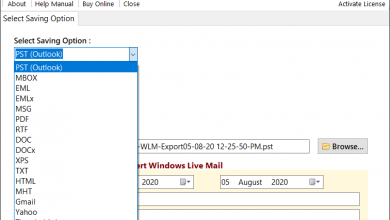Understanding The Different PPC Bidding Strategies

Pay-Per-Click advertising has been one of the most effective and long-term digital marketing strategies for businesses to flourish in the digital sphere. If you plan to invest in PPC campaigns to market your products and services you need to focus on certain areas. It will help you accomplish your goals successfully.
So below are the things you must know about PPC bidding strategies.
Things To Know About PPC Bidding
Pay-Per-Click (PPC) bidding strategy constitutes different ad campaign strategies that help businesses generate leads and boost conversions within their budget.
The PPC bidding can be categorized into three main categories-
- Smart Bidding which is conversion-based
- Auto Bidding which is function-based bidding
- Manual Bidding which is human-based
Each bidding strategy has its pros and cons that dominate the PPC ad campaign management.

The Best PPC Bidding Strategies
Now let’s check out the type and objectives of different PPC bidding strategies and how they play a vital role in the digital marketing realm.
Portfolio Bidding Strategy
Type
The portfolio bidding strategy is an automated bidding strategy.
Objective
The objective of this bid strategy is to optimize the bids across various campaigns altogether. Further, this helps you to reach your ad goals by allowing you to change the setting of the bidding strategies for all your campaigns using a single portfolio bid strategy. This saves a lot of time so that you can focus on planning other vital strategies for your PPC campaigns
Function
Some of the essential functions of portfolio bid strategy can be listed as follows-
- To maximize the website clicks according to pre-set budget.
- To gain control over automated bidding by adding the target cost-per-action (CPA) rule in the portfolio bid strategy
- To help you receive a boosted conversion value by targeting a return on ad spending (ROAS).
Pros
- It is a very effective and time-saving PPC bidding strategy as it comprehensively reports all the campaign’s sharing.
- You can easily set the maximum cost-per-click in all your ad campaigns
Cons
- It is only good for legacy campaigns.
- It is not possible to set a maximum cost per click limit with the new campaign strategies.
Target Cost-Per-Acquisition (CPA)
Type
The target cost-per-acquisition(CPA) is a smart bidding strategy.
Objective
The main objective of the target CPA bid strategy is that it allows Google Ads to use the daily budget that automatically sets the bids. Additionally, it drives as many conversions as possible for the same requested CPA.
Function
It is more suitable for legacy PPC campaigning strategies. However, it is not very useful in exploring new services or fresh accounts. Some of the modifications in this bid strategy are that it may cost more or less than your target budget. It does not run behind volume or differentiate between the higher and lower value of conversions.
Pros
- It can either be set at a campaign or portfolio level. This means that there will be no need to adjust the individual types of keyword bidding. Thus it remains consistent for maintenance.
- To hit the target CPA, you require 60 days of conversion tracking and campaign running at the minimum.
- For the learning phase, you at least need 15 conversions.
- The set number of conversions is not limited to 30 days to run anymore for Google.
- Brands that have higher CPL (cost per lead) will drive this metric.
- It is very useful for legacy campaigns as they have already established a single goal and have a fixed budget.
Cons
- To hit your target CPA, you always need the conversion tracking report.
- When the ad network passes up the potential prospects to bring you conversion at your requested CPA, the volume will get impacted.
- It takes time to learn smart bidding as compared to automated bidding.
- It has a high risk of under-bidding or spending and can only be used in campaigns that have been running for a while now.
- It is not suitable for exploring new markets/services or for brand new accounts
Target Return On Ad Spending (ROAS)
Type
The target return on ad spending (ROAS) falls under the smart bidding strategy.
Objective
This bid strategy focuses on giving power to Google to spend the daily budget and set bids automatically. So that it can achieve your target ROAS and can drive as many conversions as possible at the highest value and optimize the conversion value as you enter into an auction.
Function
Its main function is to focus on the value of the conversions rather than volume before you enter into the auction. En özel ve reel kızlar Şişli Escort Bayan Nurhayat | İstanbul Escort Bayan sizleri bu platformda bekliyor. The prerequisite of this strategy is that it grasps so much attention that it sets ups the conversion values for each conversion. Most of the PPC service providers and digital advertising agencies set ROAS goals instead of CPA goals.
Pros
- This bidding strategy ensures more profitable options and a seamless campaign reporting
- This helps in balancing the volume and ROI of the budget that is invested in the digital marketing campaign.
- You do not need hundreds of conversion volumes for making it accessible to lead generation.
Cons
- They are not suitable for startups and new business sectors. They are only good for established brands/businesses in the digital realm.
- Giving conversion values before the auction requires a better understanding of business operations.
- It might lead to higher investment if you cannot align your budget, goals, and targets.
Maximizing Clicks
Type
Maximizing clicks bidding strategy comes under automated bidding strategy
Objective
This bidding strategy is very suitable for highly-converted conversion campaigns and brand campaigns. Additionally, it helps in generating as many clicks as possible within your specific budget.
Function
The main focus of this bid strategy is to drive as many clicks as possible over conversions. Before starting with this bidding strategy, you must figure out your goals and business aims. You can use this bid strategy with cost-per-click (CPC) to spend an additional budget that will remain after manually selecting the keyword to spend on. This bid strategy is very helpful in increasing the clicks in all the Google Ad campaigns.
Pros
- It does not have a threshold for conversions to function properly.
- It is very effective in maximizing the incoming web traffic onto your site.
- It helps in ensuring control over the spending of the budget by working manually with the Cost-Per-Click (CPC) bidding.
- It is very effective in the early stages of the business or for businesses that have low search volumes.
Cons
- It does not have a filter on the quality of the incoming traffic.
- The overall report of this bidding strategy does not have a major effect overall.
- It focuses on the volume of clicks over quality. This means that you could lose your profits on the marketing budget.
- It is not suitable as a long-term strategy for businesses.
Maximizing Conversions
Type
Maximizing the conversion is a fully automated bidding strategy.
Objective
The main objective of maximizing conversion bidding strategy is to drive maximum conversion irrespective of the cost or value per lead.
Function
The function of this bid strategy is to drive conversions through the ad network within a specific budget. This bidding strategy is improved by an advanced Artificial Intelligence (AI) used by Google.
Pros
- It helps out in balancing the conversion volumes and sales at the same time.
- There is no prerequisite of minimum conversions for this bidding strategy as a threshold.
- It shows prominent growth and remarkable consistency among all the other PPC bidding strategies.
Cons
- The conversion action is a necessary setup for this bid strategy to work.
- This bid strategy may miscalculate the budget due to the double-counting of the conversions.
- This bidding strategy does not have any budget limit while spending on ROAS.
Target Impression Share
Type
The target impression share is an automated bidding strategy.
Objective
The primary objective of the target impression share bidding strategy focuses on obtaining the desired impression share in the desired geographical location within a specific budget.
Function
In this bidding strategy, the location and percentage goal for the number of impressions within the budget are asked from the marketers, advertisers, or PPC service providers.
Pros
- The impression share can be on autopilot if the campaigns require a high number of target impression shares.
- It is very helpful for mobile-oriented PPC campaigns as it can secure the ideal placements of the ad runs.
- It helps you figure out if the keyword concept used to share fits the budget or not.
Cons
- This bidding technique does not focus on conversions or clicks as a threshold.
- You can see low volumes or no volume of impressions if the target is not aligned with your strategy.
- There are always unproven terms and risks in this bidding war.
Manual CPC Bidding
Type
Manual CPC bidding is a type of manual bidding strategy option offered by Google.
Objective
The main focus of this bidding strategy is to get leverage of the bid adjustments over the bidding goals in it as it is an advertiser-controlled bidding strategy
Function
In this bidding strategy, we see that the bids are set manually by the Ad manager at the keyword level and remain unchanged until and unless the advertiser changes them. Additionally, most of the bid adjustments are available as exclusions or to adjust the target Cost-Per-Acquisition (CPA) or target Return On Ad Spending (ROAS) on the auto bidding.
In this bidding strategy, the advertisers have accessibility in the following areas where they can make adjustments manually-
- Audience
- Location
- Time
- Device
Pros
- In this type of bidding strategy, you have complete control over its users.
- It allows for precise message mapping due to audience bid adjustments
Cons
- It is a very time-consuming process as you have to monitor, track, and update the bids manually.
- It is very easy to overbid in this bidding strategy due to cumulative bid adjustments.
Conclusion
Grow and flourish your business and brand identity in this digital realm with the most suitable PPC bidding strategy for your business. There are ample opportunities to position your brand with the help of the best PPC service provider in India at affordable prices.







